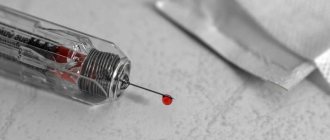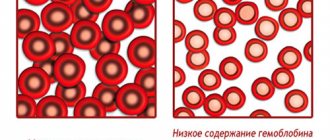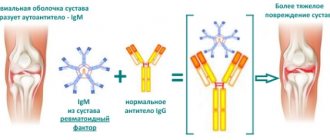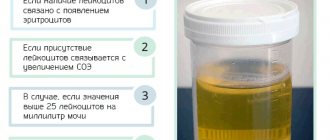What is glucose in urine
The appearance of glucose in the urine is a good reason for concern and further examination, since in a normal state, sugar, after the filtration process through the membrane of the renal glomerular system, is absorbed in the proximal tubules. If there is a level of sugar concentration that exceeds the norm, the kidneys cease to cope with its processing (reabsorption of glucose) and are excreted in the urine. This is just one reason for the pathological condition, which is called glycosuria and is a criterion for determining the success of the fight against diabetes.
Therapy methods
The presence of elevated sugar levels in a woman’s urine is a reason to seek medical help from an endocrinologist, who will identify its root cause, give dietary recommendations, and prescribe tests for the differential diagnosis of diabetes.
Differential diagnosis of diabetes involves:
- blood sugar level analysis;
- Ultrasound of the kidneys;
- glucose sensitivity testing;
- tracking daily changes in urine sugar levels (glucosuric profile).
If diabetes is confirmed, tests will be required to detect pancreatic disorders that affect glucose absorption. This will reveal the degree of insulin dependence and, accordingly, the need for replacement therapy.
The diabetes treatment process includes:
- taking glucose-lowering drugs in tablet or injection form;
- following a low-carbohydrate diet that excludes alcohol and limits fats;
- dosed physical activity.
Homeopathy and herbal medicine can be used as an auxiliary tool that can help reduce sugar concentrations. Their appointment is made on an individual basis, taking into account other symptomatic manifestations of diabetes.
Normal level of sugar in urine
Knowing the normal blood sugar level is important from the point of view of preventing endocrine disorders that lead to many dangerous diseases, for example, diabetes, pancreatitis, and disorders of the pancreas. For adult men and women, the glucose norm is approximately the same and ranges from 0.06 to 0.08 mmol/liter. The maximum permissible norm is considered to be 1.7 mmol/l. For a child’s body, this limit is higher – 2.8 mmol/l. This is the highest acceptable limit. The standard norm for a child is up to 1.7 mmol/l.
- White lumps in the throat
- At what water temperature can children and adults swim in the sea, river or pool?
- How long to cook shrimp after boiling. Shrimp cooking time
Treatment
Therapy and control of diabetes mellitus is carried out depending on its form:
- DM 2 or mild form. Well controlled at an early stage. The patients are not insulin dependent. Working capacity drops slightly. The doctor prescribes drugs in the form of tablets that lower sugar. In the absence of a diet or gross violation of recommendations, such diabetes can develop into the middle stage.
- DM 1 or moderate form. The disruption of substances has deep processes. Insulin administration is required periodically. With this form, it is difficult to regulate nutrition and maintain the desired level of work capacity.
- Severe form. In this condition, the patient is advised to take insulin daily. If you follow all the doctor’s recommendations, adhere to proper nutrition and lifestyle, a severe form can develop into type 1 diabetes.
Sometimes it takes a long period for blood sugar levels to stabilize. Any drug treatment is impossible without diet.
Nutrition
Diet foods that are difficult to digest must be excluded from the diet; the carbohydrate content should be minimal. For a good effect, it is better to give up bad habits (smoking, alcohol). Cook food using water or steam. Vegetable and animal fats are limited as much as possible. Diabetes is difficult to control without a specialist. To ensure that tissues do not lack glucose, it is better to coordinate the diet with your doctor.
Medicines
Using tablets you can achieve stabilization of glucose synthesis. Nowadays, there are many drugs to reduce sugar. They are all based on different actions. Some increase the sensitivity of cells to insulin or stimulate the production of the hormone.
List:
- Pioglar (from 300 rubles);
- Glutazone (from 250 rubles);
- Metformin (from 160 rubles);
- Januvia (from 1600 rubles);
- Novonorm (from 500 rubles);
- Glyurenorm (from 450 rubles).
Treatment with insulin
It is important for all diabetics to learn how to inject themselves. Even one missed dose can lead to serious complications. It is not difficult to administer the hormone, and even a child can be accustomed to these constant manipulations:
- Insulin must be injected into the subcutaneous fatty tissue on the abdomen, not too deeply, so that the liquid does not enter the muscle tissue. But also an insufficiently deep injection will lead to insulin leakage. This will reduce its effectiveness.
- If the needle is no more than 6 mm long, there is no need to form a skin fold. The introduction is carried out at an angle of 90 degrees. For longer needles, it is better to make a skin fold and point the syringe at 45 degrees in relation to the abdomen.
- Extended-release insulin can be injected before bed. The hormone acts smoothly, but at night it is better to wake up and check your blood sugar level with a glucometer.
Diabetes mellitus is a serious and insidious disease. If left untreated, there is a risk of loss of health, deterioration of kidney function and severe coma.
You can also watch a video where they will tell you how urine is collected and what is important to remember when taking the test.
Renal threshold for glucose
A decrease in the ability of the kidneys to absorb sugar, thereby normalizing blood counts, is assessed by the threshold of the critical glucose level. Reaching this threshold allows us to state the onset of a pathological imbalance in the human body. In adult men and women, this glucose level is 8.9-10 mmol/l. In children – 10.45-12.65 mmol/l. Exceeding these indicators leads to the fact that the renal tubules cannot cope with the volume of glucose, and it begins to be excreted from the body in the urine.
How to reduce indicators?
Knowing what sugar in the urine means, and what this condition in a patient is called in medicine, and, in general, why it may appear, it is necessary to figure out how to remove it from the human body?
The first thing to do in such a situation is to identify the root cause of this condition and direct all efforts to eliminate it. If the reasons lie in identified diabetes mellitus, then the measures may include many aspects.
Firstly, it is recommended to exclude sweets, confectionery products, carbonated and alcoholic drinks from your diet. In general, it is advisable to exclude all food products that contain granulated sugar.
Secondly, you need to stop consuming simple carbohydrates, switch to a balanced and rational diet, eat not two or three times a day, but 5-6 times, and only in small portions of 300 grams. Table 5 diet will tell you more about the menu.
Thirdly, you need to introduce optimal physical activity into your life. As for playing sports, this should be discussed with your doctor. But daily walks in the fresh air will help remove sugar from the urine and return to normal health.
In any case, the situation requires resolution, and no matter how much the patient wants it, the problem will not go away on its own. It is necessary to consult a doctor, find the root causes of glucose in the urine, and do everything possible to eliminate it.
A person’s health is one thing, and there won’t be another, so you need to treat it extremely carefully, listening to your condition. What methods do you know to quickly remove sugar from urine? Share your proven methods to make the review as complete as possible!
Determination of glucose in urine
The state of the human body’s indicators depends on factors of interaction with the external environment: food, stress, medications. This can affect the objectivity of laboratory tests of sugar (sugar load), so it is necessary to adhere to the rules for collecting urine. The optimal time is morning. The following factors need to be considered:
- Before directly collecting the morning portion, you need to carry out hygiene procedures and take a shower to prevent microbes that decompose sugar from coming into contact with the test jar.
- The day before collecting 24-hour urine for glucose analysis, you should stop consuming any products containing alcohol and avoid physical and psycho-emotional stress.
- Material for research must be delivered to the laboratory no later than 6 hours after collection.
You can determine your glucose level yourself by using special strips that need to be moistened with urine and after two minutes compare the color with the value scale. More accurate methods include the following:
- Gaines test.
- Benedict's test.
- Nylander's test.
- Polarimetric method for determining glucose.
- Althausen colorimetric method.
- Method based on color reaction with orthotoluidine.
Urinalysis: how to get reliable results
Any diagnostic procedures will give correct indicators only if the patient adheres to certain rules for the preparation and collection of biological material. A urine test requires the following:
- Before collecting urine, the genitals are thoroughly cleaned using soap without fragrances and various impurities that may affect the result. Also, some microorganisms are able to quickly break down sugar.
- Collect samples in a clean, sterile container with a lid.
- To conduct the study, more than 150 ml of morning urine output will be required. If it is not possible to deliver the jar to the laboratory immediately, then the maximum permissible storage time for urine is 6 hours.
- When collecting the daily dose of secretions, use a container with darkened walls.
- 24 hours before the test, do not drink alcoholic beverages (beer, vodka, etc.).
- If the patient is taking diuretics, he must stop treatment with diuretics 2 days before going to the laboratory.
- Half an hour before collecting urine secretions, limit physical and emotional stress, otherwise glucose will be temporarily increased.
If you adhere to these rules, the patient will receive reliable results. Those who suspect diabetes mellitus or endocrine system disorders should especially comply with all requirements.
It is also important for patients undergoing treatment to follow the rules, since urine tests make it possible to assess the effectiveness of the prescribed therapy
Causes of high sugar
High sugar in the urine is a symptom that indicates the influence of one or another destructive factor on the body. These indicators include:
- insulin-dependent diabetes;
- poisoning;
- pancreatic diseases;
- epilepsy;
- infection;
- hyperthyroidism;
- chronic kidney and liver diseases;
- hypertonic disease;
- stress.
For diabetes
The reason for the increase in glucose in the urine in diabetes mellitus has a different mechanism unique to diabetes, the basis of which is insulin deficiency. The release of sugar from primary urine occurs as a result of phosphorylation. This process is possible only if the enzyme hexokinase is present, the activator of which is insulin. Lack of insulin disrupts the biochemical metabolism of glucose.
Denial of responsibility
The article about glucose (sugar) in urine, glucosuria of the medical portal “My Tablets” is a compilation of materials obtained from authoritative sources, the list of which is posted in the “Notes” section. Despite the fact that the accuracy of the information presented in the article “Glucose (sugar) in urine (glucosuria)” has been verified by qualified medical specialists, the contents of the article are for reference purposes only and are not a guide for independent (without contacting a qualified medical specialist or doctor) diagnosis. making a diagnosis, choosing remedies and treatment methods.
The editors of the portal “My Tablets” do not guarantee the truth and relevance of the materials presented, since methods for the prevention and elimination of glucosuria are constantly being improved. To receive complete medical care, you should make an appointment with a doctor, a qualified medical specialist, a nephrologist [3] and an endocrinologist [4], first of all.
back
Glucose in the urine of a child
The limit value of glucose in urine in children is 2.8 mmol/l. Indicators above this norm may be a signal for in-depth tests. If an excessive amount of sugar in the urine is detected, pediatricians send children for a repeat laboratory test, which will reveal whether this is a pattern or an accident. The following factors can increase the indicator:
- Abuse of sweet foods on an empty stomach, fast food, foods with preservatives, dyes (the diet needs to be adjusted).
- Infectious meningitis, encephalitis, diabetes mellitus.
- Diseases of cucumbers in a greenhouse and their treatment
- Blood sugar test
- Uterine hemostatic drugs
Independent research
People who already have a history of diabetes mellitus can independently monitor the level of glucose in their urine without seeking help from a laboratory. This method can also be used by other patients who do not yet have a diagnosis such as diabetes (or kidney pathology), but simply want to check their body for preventive purposes.
To determine it yourself, you will need to purchase a sterile container for collecting biological fluid and special test strips from the pharmacy, which will help determine your glucose level. One such remedy is Glucotest.
Test strips that detect the presence of sugar in urine are made of plastic. They are produced in quantities of 25 pcs. The packaging is presented in the form of a tube, which is made of metal or plastic. To prevent the expiration date from expiring before that specified by the manufacturer, the tube lid must be tightly closed. No moisture should get inside. Each such test strip is divided into sectors. All of them are impregnated with a special reagent.
The rules for collecting urine for sugar, the analysis of which will be carried out at home, are the same as when collecting biological material for laboratory research.
Place a test strip in the collected urine, then pull it out and wait 1 minute. When the time is up, the test sample is compared with the standard one, which is applied to the packaging where the analysis strip was previously located.
It should be borne in mind that sterility and proper collection are not enough to obtain an accurate result. The test may be considered invalid if the result is checked against the main sample after more than 1 minute has passed.
At home, you can conduct both a daily and half-hour test. If the urinary test shows a positive result, that is, glucose is present in the biological material, it is recommended to repeat the test again. This is necessary to ensure that there are no extraneous factors that could distort the results. If the test is not reassuring the second time, you need to seek help from a specialist. The fact is that the accuracy of a home urine test for glucose using test strips is 97-98%, provided that all preparatory measures and other collection rules have been carried out in accordance with the norm.
High sugar levels in the body can also be confirmed using a laboratory blood test.
Previous Tests Glycemic profile for diabetes Next Tests How to take a glucose tolerance test during pregnancy?
Was 130 kg now 65! In a week I gained 17 kg of fat without dieting or training! I drank cheap bitters.. My fat belly is not caused by food! It will burn off in 3 days, drink strong Soviet on an empty stomach... Easy weight loss is available to everyone! Regular fat burns... Age-related fat does not come from food! It will go away in 3 days, drink regular Soviet on an empty stomach...
Types of glucosuria
The level of sugar in urine in men and women can be increased for various reasons, which depend on the type of hidden pathology. There are primary and secondary renal types of glucosuria. In the first (renal diabetes), the cause of symptoms is a failure of the mechanism of glucose resorption in the proximal tubules of the kidneys. This reduces the renal glucose threshold without disrupting intermediate carbohydrate metabolism.
In the secondary renal type, organic kidney damage, nephritis, deficiency, and glycogen storage disease are observed. Variants of renal glucosuria can be:
- impaired resorption of sugar in the tubules - physiological glucosuria with normal glucose levels;
- hyperglycemia without glucosuria - the concentration in the urine does not exceed the threshold for glucose reabsorption, but when it increases, a deviation is observed;
- traces of glucose are absent in the collected urine - impaired renal filtration;
- elderly patients may suffer from glucosuria, which occurs due to decreased activity of kidney enzymes, this is eliminated by diet.
Symptoms
The amount of glucose in urine can fluctuate in both women and men. It depends on many factors: lifestyle, diet, bad habits. If your sugar level has increased once, then there is no reason to panic yet. You just need to retake the analysis. However, even if a repeated test showed glucose levels and it is still unclear why there is sugar in the urine, this means that there is a problem in the body. You need to observe yourself and find out if you have the following symptoms:
- Feeling tired.
- Increased feeling of thirst.
- Dry skin.
- Irritation in the genital area.
- Sudden loss of body weight.
- Desire to sleep.
- More frequent urge to urinate.
Even one of the above signs is a reason to contact a specialist. He will order additional tests and ultimately be able to make a diagnosis.
How to get it back to normal
High sugar in the urine is diagnosed based on a double urine test. If a deviation from the norm is detected, the following methods are used:
- Correction of the diet (refusal to eat simple, fatty, spicy carbohydrates, alcohol, beer, sweet carbonated drinks).
- Maintaining a daily routine and light physical activity.
- Rejection of bad habits.
- If pathologies are detected, glucose-lowering tablets, insulin-replacement drugs, vitamins, and drugs to improve the functioning of the liver and pancreas are prescribed.
- If toxic damage or renal failure develops, plasmapheresis and hemodialysis procedures are indicated. Irreversible changes require surgery or organ transplantation.
Proper nutrition
Increased sugar in the urine is called sticky urine in the professional slang of therapists and requires correction of the nutrition plan. Switch to small portions, split meals (every 2-3 hours). Simple carbohydrates (sugar, sugar-based products, chocolate), which sharply increase glucose levels, are prohibited. Try to eat complex carbohydrates, foods with potassium and protein:
- dried apricots, raisins;
- cabbage, spinach;
- peas, beans;
- almonds, bran, sprouted grains;
- apricots, potatoes;
- mushrooms, fish.
Minimize your intake of sugar and salt, watch your weight, and don’t get nervous for no reason. Strengthen your health by taking multivitamin complexes. Avoid fast food, fried, fatty, spicy, smoked foods. All alcoholic drinks, including beer and sweet soda, are prohibited. Drink more fluids during the day, walk more.
Traditional treatment
Traditional medicine that normalizes kidney function and carbohydrate metabolism can reduce the glucose content in urine:
- Brew a tablespoon of raw material collected from an equal amount of nettle, blueberry leaves, and dandelion roots with a glass of boiling water. Leave for 6 minutes, strain, take a tablespoon three times a day for a week.
- Pour a glass of washed oats into a liter of boiling water, cook for 1.5 hours, strain. Drink a glass before each meal.
- Chop two tablespoons of blueberry leaves and boil with 400 ml of water for 7 minutes. Strain, drink half a glass 40 minutes before meals.
Increased sugar concentration in pancreatitis and chronic kidney disease
It is important to understand that often excess glucose levels in the urine occur not because of diabetes, but because of other, no less dangerous diseases. For example, with an exacerbation of inflammation of the pancreas, called pancreatitis
Also, the main cause of high sugar in the urine is all kinds of kidney diseases, both chronic and infectious. That is why, in any case, exceeding normal values regarding high glucose levels requires an additional mandatory examination of the body in order to identify the main reason for the increase in values, and at the same time select a truly effective treatment.
High sugar in urine in diabetes
However, in most cases, of course, an increase in the concentration of sugar in the urine is observed precisely in diabetes. And in this case, the main treatment is aimed at maintaining the amount of glucose at a normal level, avoiding either exceeding or decreasing the levels.
Pharmacies once again want to make money from diabetics. There is a smart modern European drug, but they keep quiet about it. This…
Read more >>
For this, as a rule, drug treatment is used, and additional procedures and a specialized diet with a minimum amount of carbohydrates that can eliminate excessively high glucose concentrations will also be required.
Temporary increased sugar in urine
It is worth noting that often the reason for the increase in glucose concentration in the urine is only a temporary increase in levels, and there can be many reasons for this. Often, such results appear in cases where the analysis is not taken on an empty stomach, or the daily diet contains an excessive amount of all kinds of sweets, which ultimately distorts the final analysis, making it unreliable.
Needless to say, there can be quite a lot of reasons. That is why, before starting treatment of the disease and prescribing appropriate recommendations, it is necessary to identify the main reason for exceeding quantitative indicators. Often this requires some additional research, as well as more detailed analyses, in order to obtain information directly about the causes of the disease, its danger, and, accordingly, the prescriptions that are relevant in this particular case.
I have suffered from diabetes for 31 years. I'm healthy now. But these capsules are not available to ordinary people, pharmacies do not want to sell them, it is not profitable for them...
Read more >>
Margarita Pavlovna — 15 Oct 2020, 21:33
I have type 2 diabetes - non-insulin dependent. A friend advised me to lower my blood sugar levels with DiabeNot. I ordered it online. Started the appointment. I follow a relaxed diet and started walking 2-3 kilometers every morning. Over the past two weeks, I have noticed a gradual decrease in sugar on the glucometer in the morning before breakfast from 9.3 to 7.1, and yesterday even to 6.1! I continue the preventive course. I'll write about my successes.
Olga Shpak — 16 Oct 2020, 21:18
Margarita Pavlovna, I’m also on Diabenot now. DM 2. I really don’t have time for a diet and walks, but I don’t abuse sweets and carbohydrates, I think XE, but due to age, sugar is still elevated. The results are not as good as yours, but sugar hasn’t gone beyond 7.0 for a week now. What glucometer do you use to measure your sugar? Does it show you using plasma or whole blood? I would like to compare the results of taking the drug.
Nelly - 09 Nov 2014, 22:00
Please tell me what tests need to be taken if there is high sugar in the urine in order to start treatment?
Normalization of sugar levels
Therapeutic diet
First of all, a gentle diet will help remove sugar from the body, in which it is important to exclude unhealthy, heavy and carbohydrate foods, as well as alcohol and cigarettes.
It is better to cook food using steam.
Dishes should be steamed, grilled, oven, or simply boiled. It is important to limit the use of vegetable and animal fats, as well as foods containing sugar. These measures will help first normalize sugar in the blood and then in the urine. But it is important to ensure that hypoglycemia is not allowed, so the list of allowed foods and carbohydrates should be agreed upon with your doctor.
How to treat the problem with folk remedies?
Traditional medicine can also share effective recipes that help normalize glucose in the body. The following tools have proven themselves well:
- Infusion based on medicinal herbs. Take dandelion roots, fresh blueberry and nettle leaves in equal proportions. Separate 1 tbsp. l. and pour 300 ml of boiling water. Take 1 time per week before each meal.
- A decoction based on oat seeds. Pour 1 cup of seed into 1 liter of boiling water, put on low heat and cook for 5-7 minutes. Drink 0.5 tbsp. every time before meals.
- Kefir with cinnamon. Add a pinch of spice to a fermented milk drink and drink it every day as a sugar-lowering agent.
- Soaked beans. Take 6-7 beans and soak overnight in hot water. The next day, each time before meals, consume 1 grain with a small amount of water.
Diagnostics
In order for the results of the study to be as accurate as possible, urine should be collected strictly following the following rules and recommendations:
- It is recommended to collect only morning urine;
- before collecting urine, you need to thoroughly wash your genitals without using any products;
- It is necessary to collect urine in a sterile container, which is best purchased at any pharmacy;
- the volume of urine must be at least 150 milliliters;
- After collecting urine, the container should be carefully closed with a lid and sent to the laboratory as soon as possible.
Only by following all the recommendations listed above can you be sure that the result of the study will be as accurate as possible.
For the results of the study to be correct, urine should be collected strictly following the rules
At this time, thanks to modern diagnostic methods, such an analysis can be carried out without visiting a laboratory. To do this, you need to purchase special test strips or indicator solutions. Thus, at home, you can conduct a study, the results of which can be considered completely accurate.
Complications
An increase in sugar levels in urine is usually accompanied by an increase in its content in the blood. This condition can have serious and dangerous consequences, such as:
- diabetic retinopathy. In this case, the vessels of the retina die due to the fact that the blood supply has been disrupted, this can cause loss of vision;
- diabetic nephropathy . It affects the glomeruli of the kidneys and is manifested by swelling in the legs, consistently elevated blood sugar levels;
- disorders in the nervous system . Lead to frequent or constant pain in the limbs or abdomen, also accompanied by numbness of the fingers, pain during movement, and cramps;
- various skin disorders . Manifests itself in the form of: erosions, ulcerative defects, calluses;
- various pathologies of the cardiovascular system . They appear due to excess sugar in the blood and urine. Further manifestations can lead to the development of coronary heart disease and also increase the risk of a heart attack.











